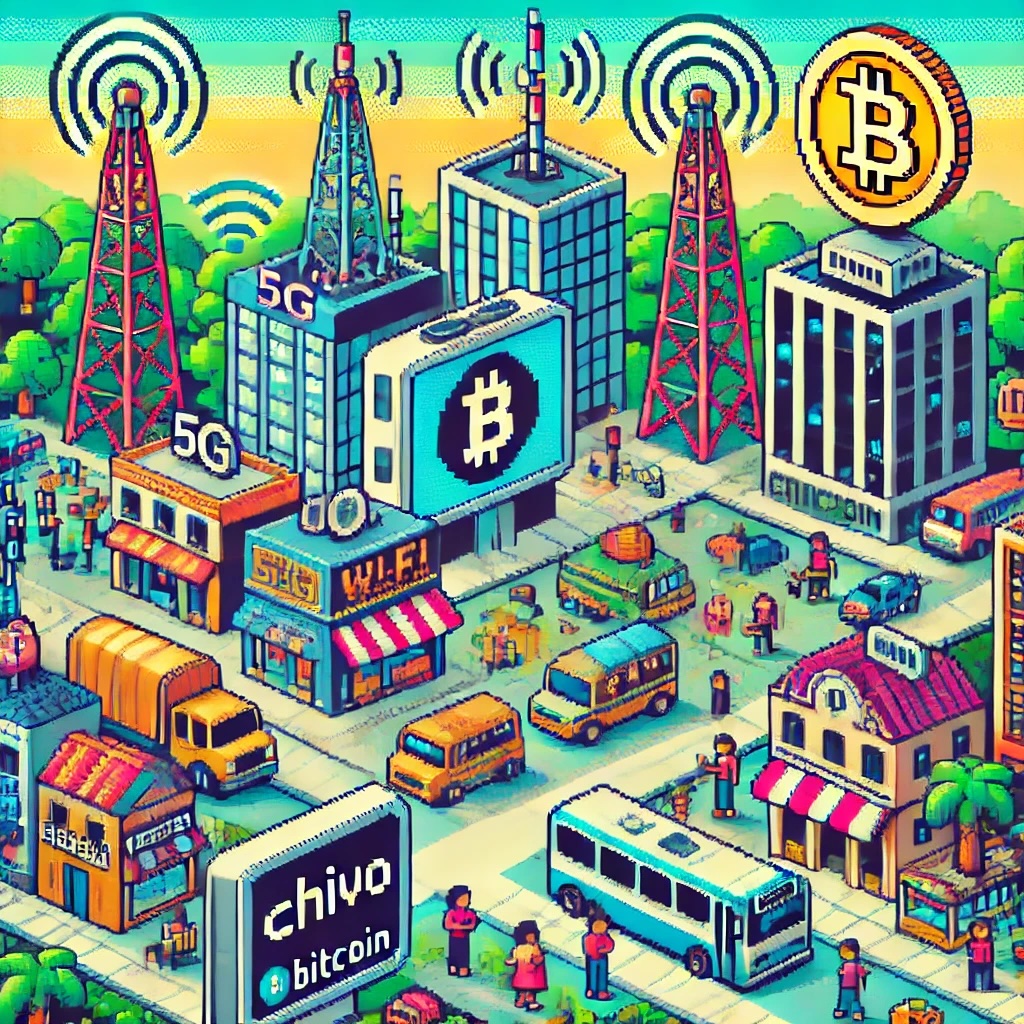
by Joche Ojeda | Jul 5, 2024 | El Salvador, Uncategorized
Partnerships with Tech Giants
El Salvador has embarked on an ambitious journey of digital transformation, significantly bolstered by strategic partnerships with leading technology companies. These collaborations have been pivotal in advancing the country’s technological landscape across various sectors.
One notable partnership is with Google, focusing on enhancing healthcare, education, and digital government services. Google’s involvement includes the deployment of cloud services to streamline government operations and the integration of AI tools to improve healthcare delivery. Through these initiatives, El Salvador aims to enhance the efficiency and accessibility of public services, ensuring that technology benefits all citizens.
In the education sector, partnerships with tech giants are transforming learning environments. Google Classroom and other digital platforms are being integrated into schools, enabling remote learning and enhancing the quality of education. These tools not only facilitate learning during crises like the COVID-19 pandemic but also prepare students for a digital future.
Development of Digital Infrastructure
Central to El Salvador’s digital transformation is the robust development of digital infrastructure. The government has made significant investments to ensure widespread internet access, recognizing it as a cornerstone for digital inclusion. Efforts include expanding broadband coverage to rural areas and implementing 5G technology in urban centers.
Digital payment systems have also seen substantial growth. The introduction of the Chivo Wallet, a government-backed digital wallet, marked a significant step in promoting cashless transactions. This initiative aligns with the broader goal of fostering a digital economy and reducing the reliance on traditional banking systems. Moreover, the Chivo Wallet’s integration with Bitcoin and other cryptocurrencies opens new avenues for financial inclusion and innovation.
E-government platforms are another critical component of this transformation. The government has launched various online portals to streamline public services, from tax filing to business registrations. These platforms not only enhance efficiency but also reduce bureaucratic hurdles, making it easier for citizens and businesses to interact with the government.
Efforts to Improve Digital Literacy
Recognizing that technological advancements are only as effective as the population’s ability to use them, El Salvador has prioritized digital literacy. The government, in collaboration with educational institutions and private sector partners, has launched comprehensive programs aimed at improving digital skills across the population.
For the general public, initiatives include community training programs and digital literacy campaigns. These efforts focus on teaching basic computer skills, internet navigation, and the safe use of digital tools. By equipping citizens with these skills, the government aims to ensure that everyone can participate in the digital economy and access online services.
In the education sector, digital literacy is being integrated into the national curriculum. Schools are now equipped with modern technology, and teachers receive training on digital teaching methods. This approach not only prepares students for future job markets but also fosters a culture of innovation and technological proficiency from a young age.
Government employees are also a focus of digital literacy efforts. Specialized training programs have been developed to enhance the digital skills of public sector workers. These programs aim to improve the efficiency of government operations and ensure that public servants can effectively use new technologies in their daily tasks.
Conclusion
El Salvador’s digital transformation under President Nayib Bukele is a multifaceted effort encompassing strategic partnerships, infrastructure development, and comprehensive digital literacy programs. By working with tech giants like Google, investing in digital infrastructure, and prioritizing digital education, the country is laying a strong foundation for a technologically advanced future. These initiatives not only improve the quality of life for Salvadorans but also position the country as a leader in digital innovation within Latin America. As El Salvador continues to embrace digital transformation, it serves as a compelling case study for other nations seeking to navigate the complexities of the digital age.
Related Articles
El Salvador: The Implementation of Bitcoin as Legal Tender
El Salvador’s Technological Revolution

by Joche Ojeda | Apr 19, 2024 | Blockchain
Blockchain in Healthcare: A Revolution in Medical Records Management
Introduction
In the digital age, the healthcare industry is constantly evolving. One of the most promising advancements is the application of blockchain technology, specifically Ethereum-like blockchains, in managing medical records. This technology offers a secure, decentralized, and transparent platform that can address many of the pressing issues in healthcare.
The Problem with Current Systems
The current healthcare systems are often fragmented and siloed, leading to incomplete records at the point of care and difficult access to patients’ own health information. This lack of interoperability between clinical data structures at both individual and community levels often results in patients receiving unnecessary medical services, such as repeated blood tests or physical examinations. Moreover, healthcare providers often do not have complete access to a patient’s medical records, which can lead to inadequate diagnosis or treatment.
The Blockchain Solution
Blockchain technology, particularly Ethereum-like blockchains, can revolutionize the healthcare industry by providing a secure and organized exchange of data within the medical community through shared repositories. These mechanisms aim to protect patient records and anonymity, making doctors more aware of their patients’ medical histories.
Blockchain technology alleviates the reliance on a centralized authority to certify information integrity and ownership, as well as mediate transactions and exchange of digital assets. It possesses key properties, such as immutability, decentralization, and transparency.
Use Cases of Blockchain in Healthcare
Patient Record Management
One of the most promising use cases of blockchain in healthcare is patient record management. Blockchain can enable access to longitudinal, complete, and tamper-aware medical records that are stored in fragmented systems in a secure and pseudo-anonymous fashion. This can grant patients complete ownership of their health records so that they can give or revoke access to their data at any time.
Drug Supply Chain Tracking
Blockchain can also be used to tackle the illicit shipment or unlawful processing of controlled drugs. It offers an opportunity to register, provide a chronology, and show the identity details of drugs in an immutable database. This secure monitoring of the supply chain and the traceability of medical products is important to avoid the sale of illegal or illicit drugs.
Conclusion
The application of Ethereum-like blockchain in healthcare, particularly in managing medical records, presents a promising solution to the current challenges in the healthcare industry. By providing a secure, decentralized, and transparent platform, blockchain technology can revolutionize the way we manage and access medical records, ultimately leading to improved patient care and health outcomes.

by Joche Ojeda | Jan 3, 2024 | A.I
Enhancing AI Language Models with Retrieval-Augmented Generation
Introduction
In the world of natural language processing and artificial intelligence, researchers and developers are constantly searching for ways to improve the capabilities of AI language models. One of the latest innovations in this field is Retrieval-Augmented Generation (RAG), a technique that combines the power of language generation with the ability to retrieve relevant information from a knowledge source. In this article, we will explore what RAG is, how it works, and its potential applications in various industries.
What is Retrieval-Augmented Generation?
Retrieval-Augmented Generation is a method that enhances AI language models by allowing them to access external knowledge sources to generate more accurate and contextually relevant responses. Instead of relying solely on the model’s internal knowledge, RAG enables the AI to retrieve relevant information from a database or a knowledge source, such as Wikipedia, and use that information to generate a response.
How does Retrieval-Augmented Generation work?
RAG consists of two main components: a neural retriever and a neural generator. The neural retriever is responsible for finding relevant information from the external knowledge source. It does this by searching for documents that are most similar to the input text or query. Once the relevant documents are retrieved, the neural generator processes the retrieved information and generates a response based on the context provided by the input text and the retrieved documents.
The neural retriever and the neural generator work together to create a more accurate and contextually relevant response. This combination allows the AI to produce higher-quality outputs and reduces the likelihood of generating incorrect or nonsensical information.
Potential Applications of Retrieval-Augmented Generation
Retrieval-Augmented Generation has a wide range of potential applications in various industries. Some of the most promising use cases include:
- Customer service: RAG can be used to improve the quality of customer service chatbots, allowing them to provide more accurate and relevant information to customers.
- Education: RAG can be used to create educational tools that provide students with accurate and up-to-date information on a wide range of topics.
- Healthcare: RAG can be used to develop AI systems that can assist doctors and healthcare professionals by providing accurate and relevant medical information.
- News and media: RAG can be used to create AI-powered news and media platforms that can provide users with accurate and contextually relevant information on current events and topics.
Conclusion
Retrieval-Augmented Generation is a powerful technique that has the potential to significantly enhance the capabilities of AI language models. By combining the power of language generation with the ability to retrieve relevant information from external sources, RAG can provide more accurate and contextually relevant responses. As the technology continues to develop, we can expect to see a wide range of applications for RAG in various industries.


